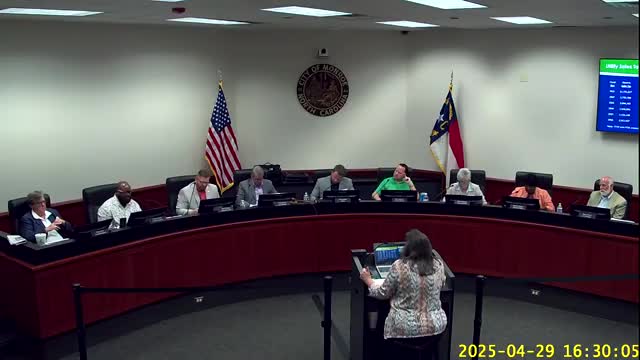Monroe officials evaluate tax rate impact amid comparisons with Indian Trail and Waxhaw
April 29, 2025 | Monroe City, Union County, North Carolina
Thanks to Scribe from Workplace AI , all articles about North Carolina are free for you to enjoy throughout 2025!

This article was created by AI using a video recording of the meeting. It summarizes the key points discussed, but for full details and context, please refer to the video of the full meeting. Link to Full Meeting
Council members expressed concerns that if Monroe were to keep its tax rate at 50.25 cents per $100 of assessed value, residents could face significantly higher tax bills. For instance, a median-valued home assessed at $255,000 could see an increase of approximately $416, raising the total tax bill to over $1,200. This scenario underscores the delicate balance the council must navigate between providing essential services and managing the financial burden on residents.

Before you scroll further...
Get access to the words and decisions of your elected officials for free!
Subscribe for FreeThe discussion also touched on the competitive landscape of local municipalities. Monroe currently ranks as one of the top small business towns in North Carolina, yet its tax rate is slightly above the average of 47 cents found in similar communities. Monroe offers a broader range of services—four more than the next closest city, Asheboro—making it crucial for the council to consider how these services are funded.
Council members noted that while Indian Trail has successfully kept its tax rate stable, allowing the value of its tax revenue to grow over time, Monroe's extensive service offerings complicate the ability to adopt a similar strategy. The council emphasized the importance of understanding the long-term implications of tax decisions, particularly as they relate to the city's growth and service provision.
As the meeting concluded, the council reiterated its commitment to ensuring that Monroe remains a vibrant community, capable of delivering essential services while also being mindful of the financial impact on its residents. The discussions set the stage for future deliberations on how best to balance these competing priorities in the face of changing economic conditions.
Converted from City Council Regular Meeting - April 29, 2025 meeting on April 29, 2025
Link to Full Meeting
Comments
View full meeting
This article is based on a recent meeting—watch the full video and explore the complete transcript for deeper insights into the discussion.
View full meeting




